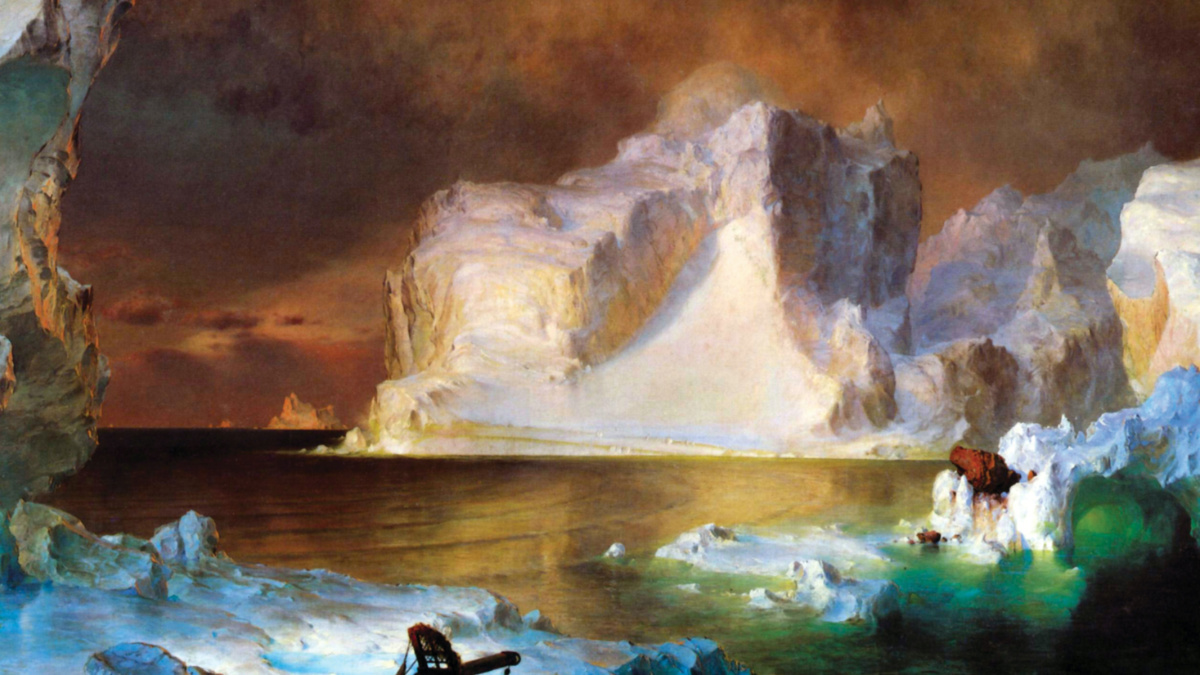
Scientists and Art Historians Are Studying Art for Climate Change Clues

Frederic Edwin Church's The Icebergs reveal their danger as a crush vessel is in the foreground of an iceberg strewn sea, 1860. Buyenlarge / Getty Images
Scientists and art historians are studying art for signs of climate change and to better understand the ways Western culture’s relationship to nature has been altered by it, according to the BBC.
Scientists have used art to help reconstruct historic weather and climatic conditions, such as the behavior of the Lower Grindelwald Glacier in the Swiss Alps prior to the invention of photography. Over the last 150 years, artists’ depictions and use of ice has changed wholesale.
In 1861, Frederic Edwin Church’s grand work, The Icebergs, showed humans’ fragility in the face of the sublime power of Arctic ice floes. “Later pieces of art,” on the other hand, “are about the ice melting because of what we’ve done to it,” according Karl Kusserow, curator of American art at the Princeton University Art Museum. “There’s a 180-degree switch from a world that we have no control over, to one in which we are actually controlling the fate of the planet, and recognizing that we’re not doing a very good job on it.”
For a deeper dive:
For more climate change and clean energy news, you can follow Climate Nexus on Twitter and Facebook, and sign up for daily Hot News.
- Climate Change, Inspired By Banksy - EcoWatch
- Artists and Activists Rise to Fight Climate Change - EcoWatch
- Indigenous Artists Use Technology to Tell Stories About Their Ancestral Lands
- Climate Scientists Target Moms in New Campaign Project

 233k
233k  41k
41k  Subscribe
Subscribe 